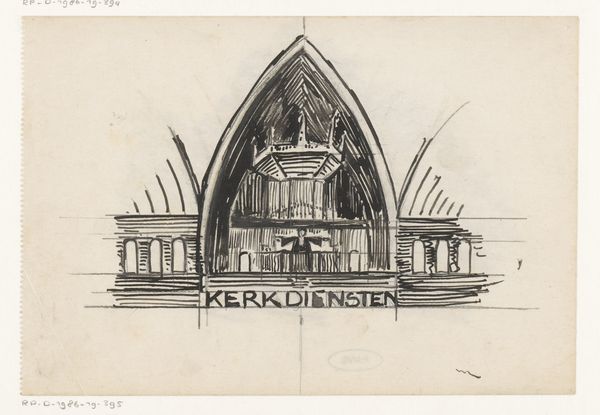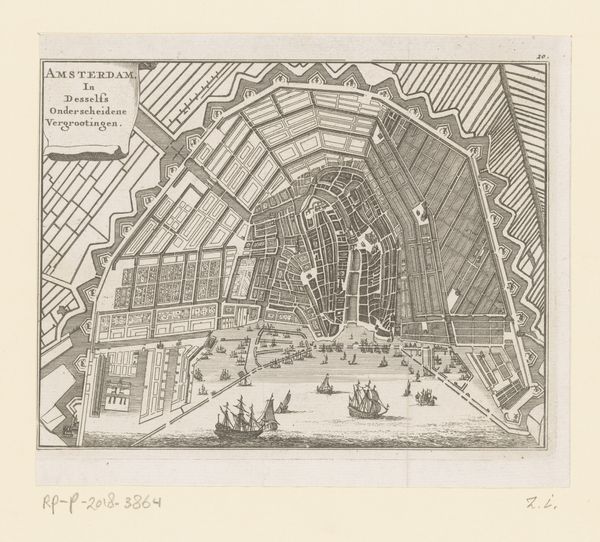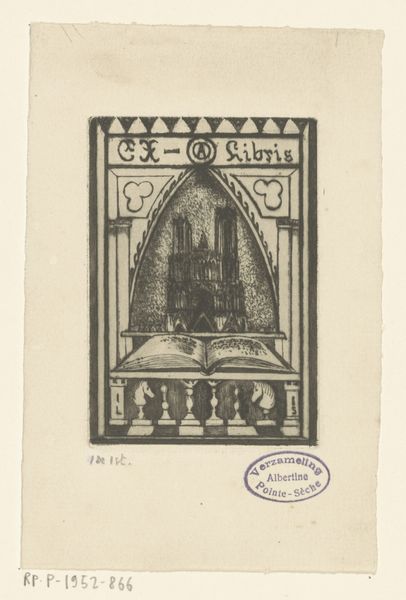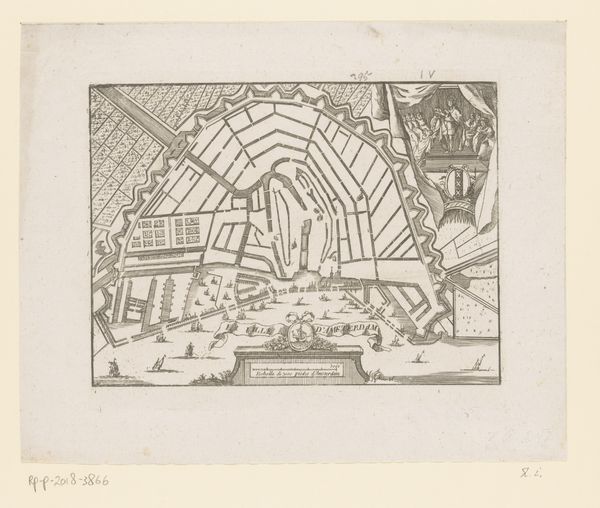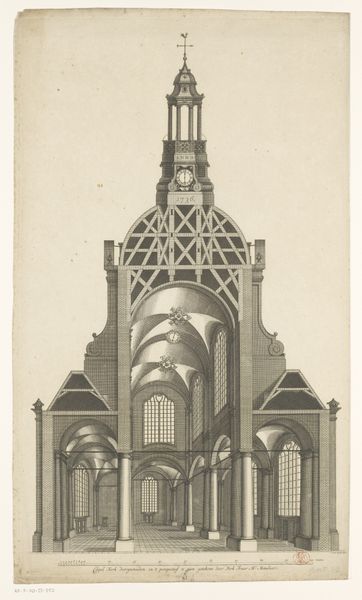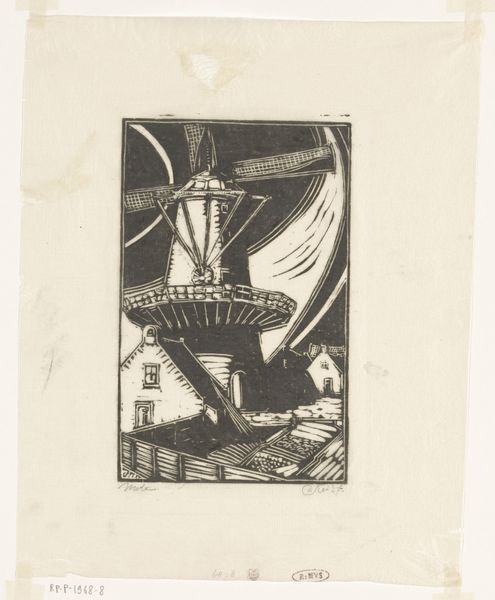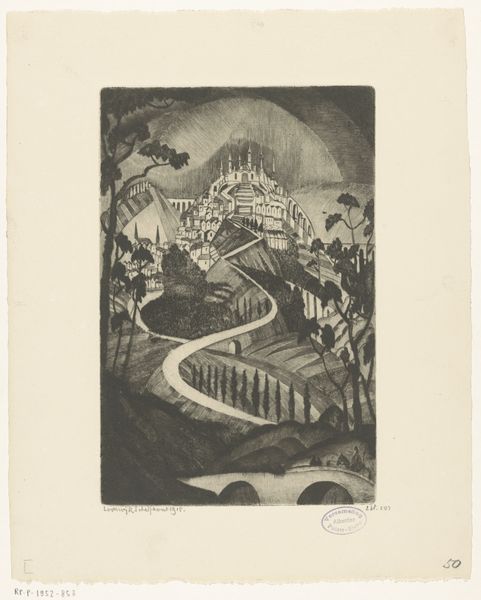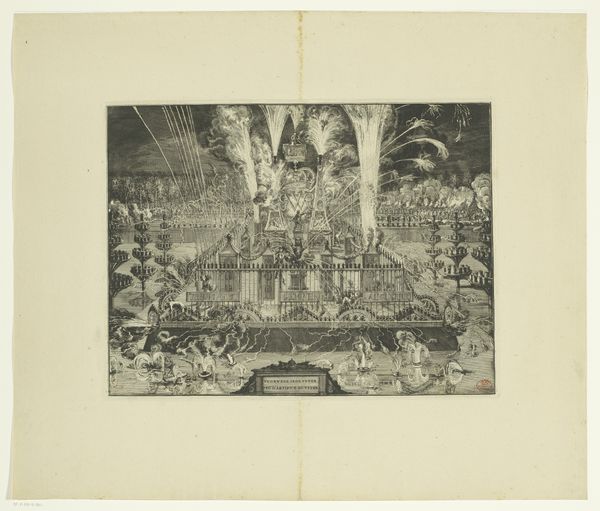
drawing, paper, ink
#
drawing
#
pen drawing
#
paper
#
ink
#
geometric
#
cityscape
Dimensions: height 107 mm, width 119 mm
Copyright: Rijks Museum: Open Domain
Editor: We’re looking at “Kerkinterieur met predikant achter de kansel,” or "Church Interior with a Preacher Behind the Pulpit," a pen and ink drawing on paper made sometime between 1884 and 1952 by Reinier Willem Petrus de Vries. It's got this almost architectural starkness to it; the strong vertical lines and geometric shapes make it feel quite formal. What stands out to you? Curator: Immediately, I notice the contrast between the almost severe lines of the architecture and the suggestion of human presence. It invites a reflection on the role of religious spaces – what do they evoke for people? The Dutch inscription on the lower edge clearly labels the site as for “Kerk-Diensten” or church services. It creates a dual message: one of order, rigidity, but also of community gathering. Do you pick up any echoes of religious symbolism in the composition? Editor: Well, the arch is such a dominant feature. It reminds me of cathedral architecture and its aspirations to something greater. And is that an organ at the very top? Curator: Precisely! The arch, the vertical lines striving upward… all symbols that traditionally lift the eye – and the spirit – towards transcendence. And the organ, positioned almost like a crown, traditionally serves as a symbol of divine inspiration and artistic mastery in these spaces. What emotion do you get from the work overall? Editor: Despite the starkness, there's something comforting in the symmetry. It’s like a visual representation of the order and routine that faith can provide. Curator: I see that too. It's interesting how De Vries uses this simplified, almost diagrammatic style. The very deliberate strokes, the limited palette… Perhaps this reflects a certain approach to religious practice at the time, maybe a quest for clarity? Editor: So much symbolism packed into what seems like a simple drawing. I will certainly pay closer attention to the visual cues present in religious spaces and art going forward! Curator: Indeed. It invites a fascinating study of faith, culture, and the artistic languages used to represent them.
Comments
No comments
Be the first to comment and join the conversation on the ultimate creative platform.
